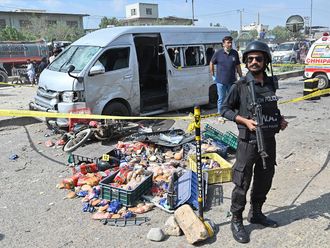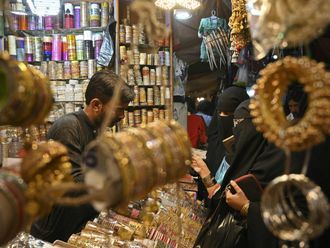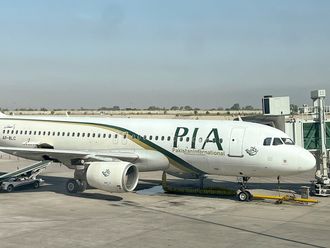PESHAWAR: Pakistani jets and helicopter gunships bombarded suspected Taliban hideouts in a northwestern tribal district Tuesday, killing at least 25 people, in response to two major bombings targeting the military.
The air strikes came a day after a Taliban suicide bomber killed 13 people in a blast near army headquarters — a rare strike close to the heart of Pakistan’s powerful military establishment.
The focus of Tuesday’s operation was North Waziristan tribal district, a stronghold for Taliban and Al Qaida linked militants on the border with Afghanistan.
Among the targets was the home of Adnan Rasheed, a senior Taliban commander who wrote an open letter last year to Malala Yousafzai, the teenage education activist shot by militants, justifying the attack on her.
Taliban and military sources said his house was hit but Rasheed himself was later seen alive in the marketplace of Miranshah, the main town of North Waziristan.
Military officials said the strikes were based on “confirmed intelligence reports” and some of those killed were linked to high-profile attacks including a bloody double suicide bombing on a church in the northwestern city of Peshawar in September.
Jet fighters began pounding targets around 12.30am (1930 Monday GMT), an official said, and were later joined by helicopter gunships.
A senior security official told AFP that at least 25 people had been killed.
He said some of the dead were linked to several recent bombings including the Peshawar church and an attack Sunday on paramilitary troops in northwestern Bannu city that killed 26 — the deadliest on Pakistan’s armed forces in recent years.
In claiming responsibility for the Bannu attack, the Tehreek-e-Taliban Pakistan (TTP) threatened more strikes to avenge their former leader Hakimullah Mehsud, killed by a US drone in November.
But TTP spokesman Shahidullah Shahid also said the group was “ready for meaningful negotiations” if the government halted US drone strikes and withdrew troops from the tribal areas.
The TTP have been waging a bloody campaign against the Pakistani state since 2007, carrying out a number of bomb and gun attacks, often on military targets.
The two high-profile attacks on Sunday and Monday marked a bloody return for the militants after a period of relative quiet following Mehsud’s death and the installation of hardline cleric Maulana Fazlullah as his replacement.
Officials said those killed in Tuesday’s air raids included “foreigners” — a term that usually refers to Arab or Central Asian fighters — as well as members of the Punjabi faction of the Taliban.
An intelligence official in Miranshah said the air strikes and shelling were still going on and had forced some residents of the area to flee.
As the military mounted their aggressive riposte to the militants, police in Islamabad said they had seized 100kg (220lb) of explosives and arrested three people in a raid.
Debate has raged for some time in Pakistan about whether a full-scale military ground offensive should be launched in North Waziristan to rid the area of militants once and for all.
The United States has long pressured Pakistan to do more to wipe out militant strongholds, saying insurgents were using rear bases in North Waziristan to mount attacks on American troops in Afghanistan.
A security official insisted Tuesday’s air strikes were not the start of an offensive but instead a “retaliatory action”.
Residents of the area said helicopter gunships were continuously hovering in the sky, while jet fighters were making regular sorties. They said that such sustained bombardment from the air was unusual in North Waziristan.
Independent verification of the casualties was not possible because media and aid workers are not allowed to visit the area.
Separately jet fighters pounded suspected Taliban hideouts in Tirah valley, part of Khyber, another of the seven tribal districts, killing four militants.
Tirah, once a stronghold of Pakistani militant groups was retaken by the military late last year though some groups still hold out in parts of the mountainous valley.












